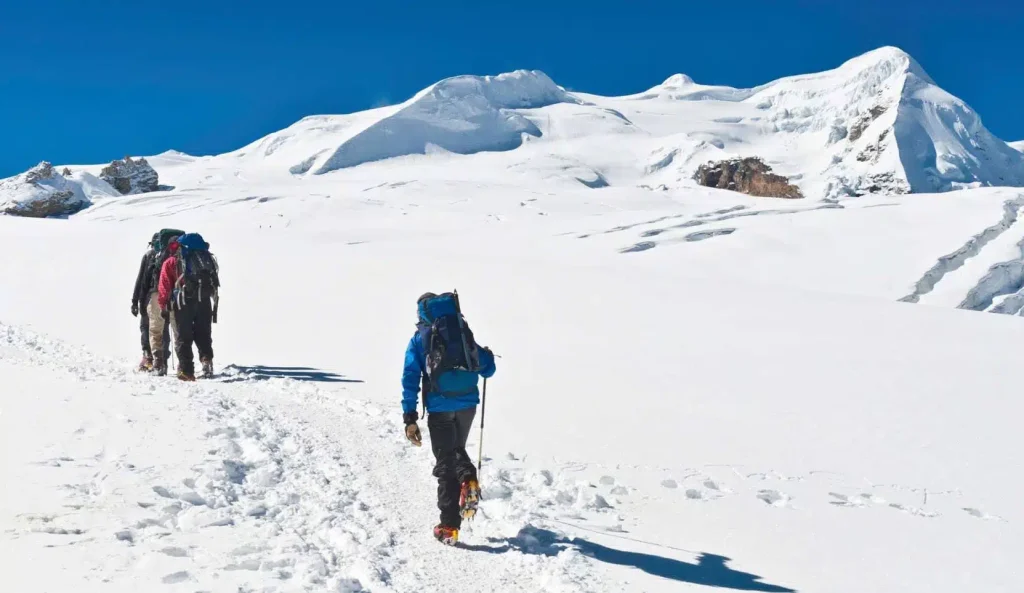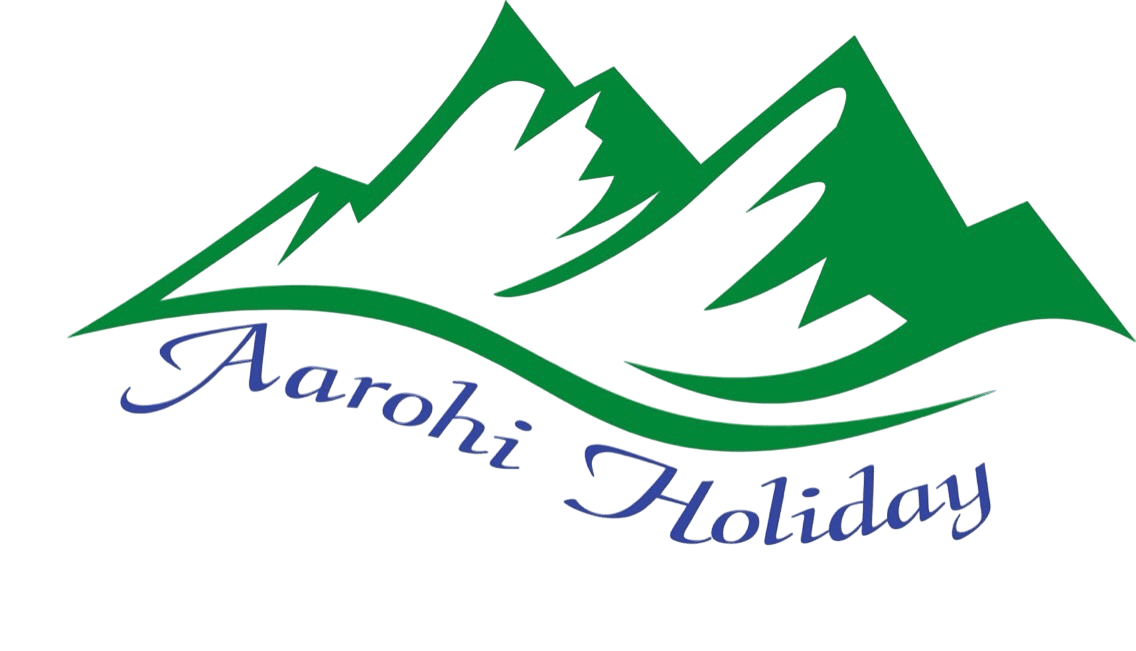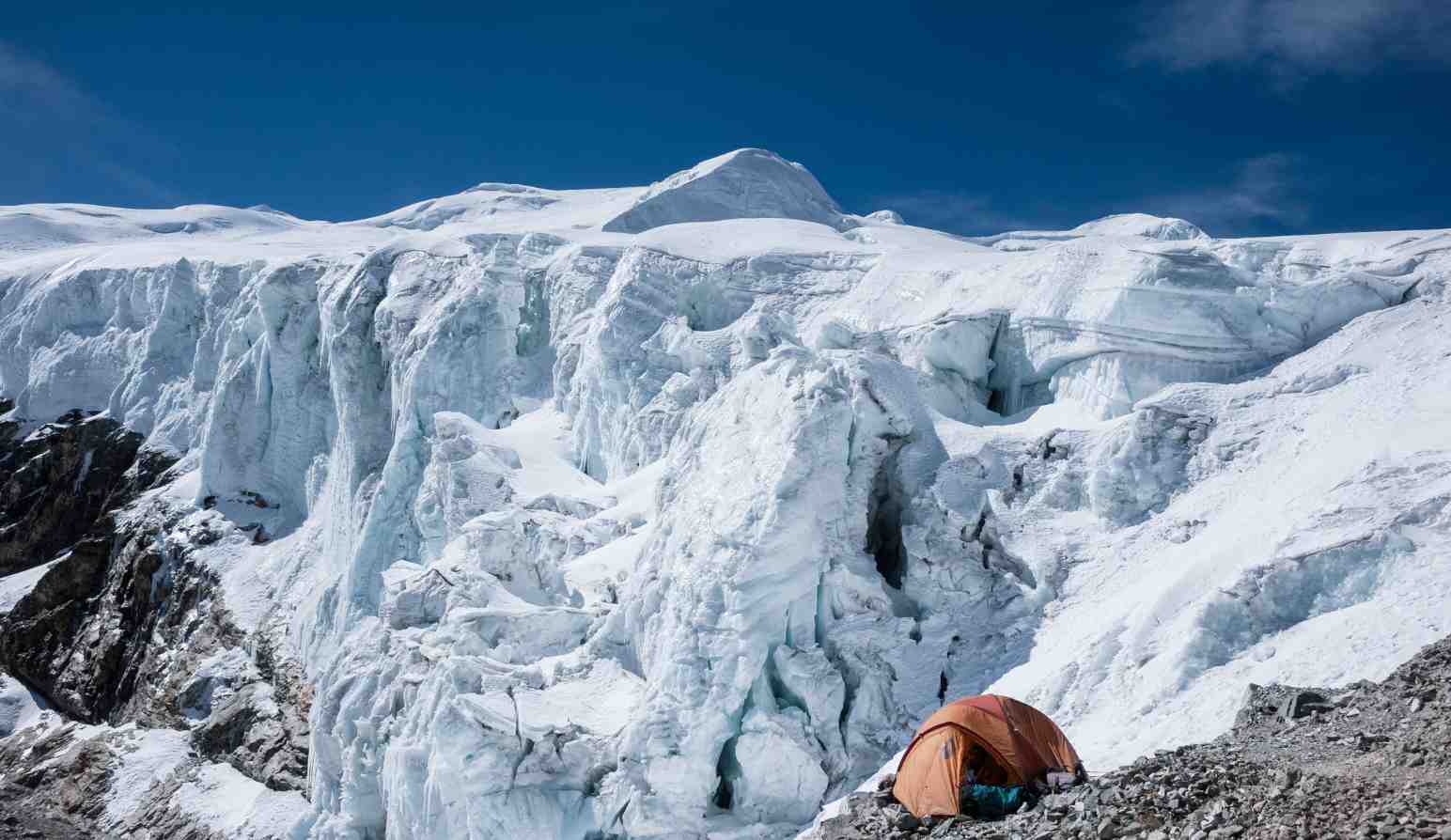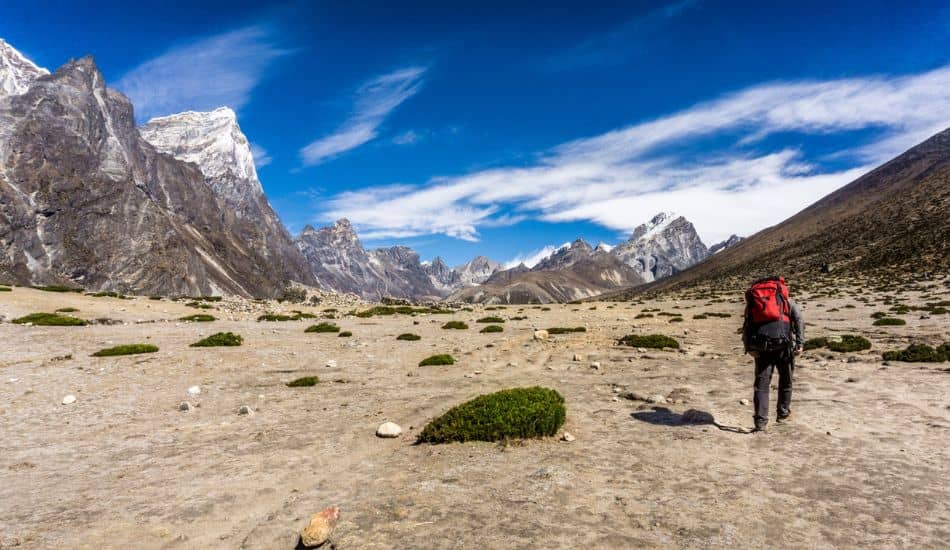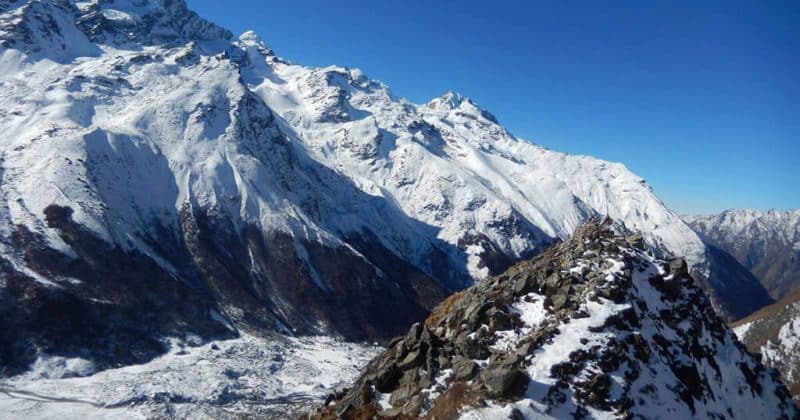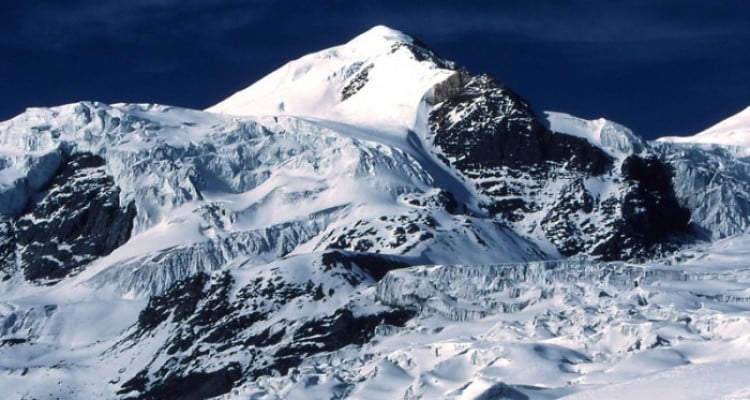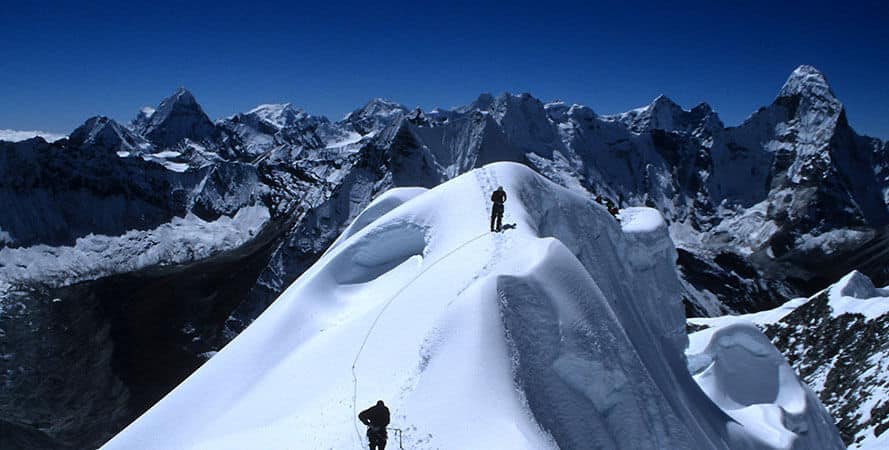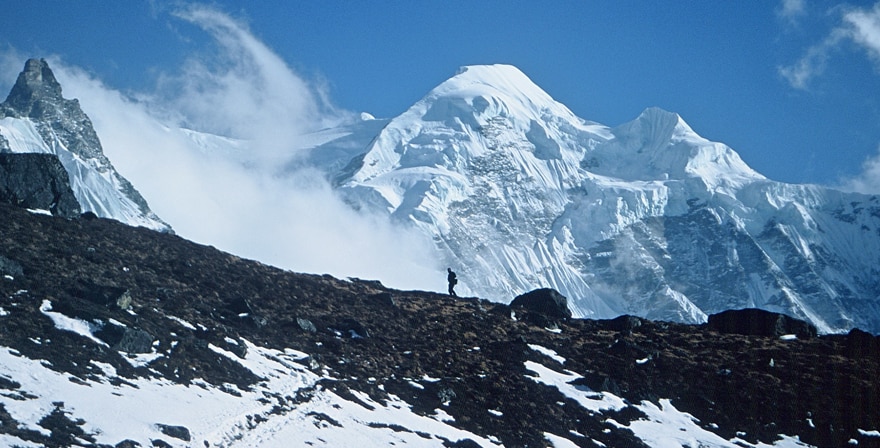Accommodation during Mera Peak Climbing
- In Kathmandu we provide comfortable accommodation in 3-star hotels with breakfast on a twin-sharing basis.(Private room accommodation can be arranged, at an extra cost)
- During the trek, we provide comfortable teahouse accommodation on a twin-sharing basis. Hot showers, Wi-Fi, and device charging are available at an additional cost.
- During the Climbing we provide high-quality alpine tents with all necessary camping gear.
Meals and Drinking water on Mera Peak Climbing
During the Mera Peak Climbing journey, you will be served three meals a day: breakfast, lunch, and dinner. On the trekking route, meals are provided in local teahouses, and during the climbing days, our crew prepares fresh and simple camping meals. Typical food includes dal bhat, Tibetan bread, momos, noodles, fried rice, soups, pasta, pancakes, and eggs. These meals are basic but filling, giving you the energy needed for trekking and climbing.
At Mera Peak Base Camp, hot meals are freshly prepared by our climbing crew using quality ingredients to keep you well-nourished at high altitude.
Staying hydrated is very important at high altitude. Bottled water is available at teahouses, but we encourage you to carry a refillable bottle to reduce plastic use. Our guides provide water purification tablets or drops so that you always have safe drinking water. Eating well and drinking enough water will help you acclimatize and stay comfortable during the climb.
Required Permits for the Mera Peak Climbing
For the Mera Peak Climb, you will need a few permits, but you do not have to worry about arranging them yourself. All permit fees are included in our package, and we handle the paperwork so you can focus on preparing for your climb.
- Mera Peak Climbing Permit: USD 250 per person (spring), USD 125 per person (autumn), USD 70 per person (winter and summer)
- Sagarmatha National Park Entry Permit: NPR 3,000 per person.
- Khumbu Pasang Lhamu Rural Municipality Permit: NPR 2,000 per person
- TIMS Card: NPR 1,000 per person
Best Time for Mera Peak Climbing
The best time for Mera Peak climbing is during the spring (April to May) and autumn (September to November) seasons. These months provide the most stable weather conditions, clear skies, and moderate temperatures, making them ideal for both trekking and mountaineering in the Himalayas. In spring, climbers can enjoy blooming rhododendrons and mild post-winter weather, while autumn offers clear skies and excellent visibility after the monsoon season. These favorable conditions help minimize weather-related risks and make the climb safer and more enjoyable.
Mera Peak Climbing Difficulties
Mera Peak is a trekking peak, but it is not an easy climb. Standing at 6,476 meters, it requires good physical fitness, previous trekking experience, and strong mental determination. The route includes steep ascents, glacier walks, and sections where you will need to use crampons, ropes, and an ice axe.
The high altitude, cold weather, and long trekking days, often 6 to 7 hours with a backpack, add to the challenge. Altitude sickness can also be a concern, especially above 5,000 meters. With proper acclimatization, rest days, hydration, and expert guidance from Aarohi Holiday, the climb is achievable and safe for prepared and fit adventurers.
Altitude Sickness and Prevention on the Mera Peak Climbing
Your safety and health are the highest priorities during Mera Peak Climbing. Our guides are trained in high-altitude first aid and carefully monitor climbers for any signs of Acute Mountain Sickness (AMS). The itinerary includes acclimatization days at key locations to help your body adjust to the altitude.
If symptoms of AMS appear, the team responds immediately. This may involve taking extra rest, descending to a lower altitude, or arranging an emergency evacuation if necessary. With careful pacing, proper hydration, and the support of experienced guides, you will be well-prepared for a safe and successful climb.
Travel Insurance for Mera Peak Climbing
We recommend that all climbers have comprehensive travel and medical insurance before attempting Mera Peak. The climb takes you into high-altitude terrain and remote regions where medical facilities are limited and emergency services can be difficult to reach. Having proper insurance ensures you are protected in case of unexpected situations during the journey.
Your insurance should specifically cover high-altitude climbing up to at least 6,500 meters. It must include personal injury, accidents, medical treatment, and emergency evacuation, including helicopter rescue if needed. With the right insurance in place, you can approach the climb with confidence, knowing you are protected and supported by Aarohi Holiday throughout the adventure.
Mera Peak Climbing Itinerary
Mera Peak Climbing begins with your arrival in Kathmandu, where you can explore the city and prepare for your journey. After flying to Lukla, the gateway to the Everest region, the trek follows a scenic route through Paiya, Panggom, Ningsow, and Chhatra Khola, offering stunning Himalayan views and the hospitality of local villages.
Acclimatization is included at key points, such as Khare, to help your body adjust to the high altitude. From Khare, you trek to Mera High Camp and begin the summit push early in the morning, reaching 6,461 meters. The climb offers spectacular views of Everest, Makalu, and Cho Oyu. After the summit, you return to Khare and continue the descent through Kothe, Thuli Kharka, and back to Lukla for the flight to Kathmandu.
The itinerary allows for a contingency day to accommodate weather or climbing conditions. The journey concludes with free time in Kathmandu before your final departure. This 19-day adventure combines high-altitude trekking with a rewarding climbing experience in the heart of the Himalayas.
Mera Peak Climbing Cost
The cost for Mera Peak Climbing is USD 2,350 per person. This includes all essential services from Kathmandu to Kathmandu, such as domestic flights, permits, accommodations, meals, climbing gear, and guide support.
This price is based on a minimum of 2 participants. For larger groups, we offer 5% to 10% group discounts, and one group leader can join free of cost. This package ensures a fully supported and safe Himalayan climbing experience.
Important Notes for Mera Peak Climbing
- In high season, Lukla flights operate from Ramechhap, about 5–6 hours’ drive from Kathmandu. In low season, flights are usually from Kathmandu. We arrange all transfers as needed.
- A helicopter flight from Kathmandu to Lukla takes 40 to 50 minutes and costs about USD 600 per person. This is an additional service for those who want to save time or avoid potential flight delays.
- This itinerary includes travel by shared bus to Ramechhap. A private jeep is also available on request for an additional cost.
- Porters can carry up to 20 kg, but we recommend keeping your pack under 10 kg as one porter is shared between two trekkers. A duffle bag for your gear will be provided.
- Meals are included during the trek. Hot showers and device charging at teahouses or lodges are available for an additional cost.
- Meals and sightseeing entry fees in Kathmandu are not included.
- Drones require hard-to-get permits, so it’s best not to bring.
Flight to Lukla
Flights to Lukla operate from Kathmandu or Ramechhap, depending on the season. Flying from Ramechhap involves a 5 to 6 hour drive from Kathmandu followed by a 30 to 40 minute flight to Lukla. Himalayan weather can be unpredictable, and fog or strong winds may sometimes cause delays or cancellations. Early morning flights are usually the most reliable. We arrange all transfers and keep you informed of any changes. Helicopter flights are also available at an additional cost.
Fitness Preparation for the Climbing
Mera Peak Climbing is a high-altitude adventure that requires good physical fitness and endurance. The climb reaches 6,461 meters and includes long trekking days combined with challenging climbing sections. Regular walking, hill or stair climbing, and cardio exercises such as jogging, cycling, or swimming are recommended to prepare your body. Strength training for your legs, core, and back will also be very helpful. With proper preparation and the guidance of our experienced team, most healthy and active individuals can successfully complete the climb.
A Typical Day on the Trail
A typical day on the Mera Peak Climbing journey involves 5 to 8 hours of trekking and climbing on rugged trails, rocky paths, and high-altitude terrain. The day begins after a warm breakfast, followed by walking through remote Himalayan villages, forests, glacial valleys, and moraine landscapes. Elevation gains are gradual on trekking days and become more challenging during climbing sections, with the summit day requiring careful use of ropes, crampons, and an ice axe.
You will have rest breaks and a lunch stop to stay energized while enjoying breathtaking views of Everest, Makalu, Cho Oyu, and other surrounding peaks. Each day combines trekking and climbing, offering both cultural experiences and the excitement of high-altitude adventure.
Arrival Instruction
Upon your arrival at Tribhuvan International Airport, our company representatives are stationed to welcome you to the country. We request you to carefully look for your name being held by our representatives following the events upon landing. The representatives are responsible to escort you to your hotel in Kathmandu. You will see men offering you to carry luggage and take you to your destination as you exit the airport. We request you pay no attention to these people and follow the designated representatives and follow their instructions. You will also need to keep an eye on your luggage and belongings to avoid any complications.
Nepal Visa Entry Procedure
For entry into Nepal, there are visa requirements everyone (except Indian nationals) must complete before being allowed to pass through immigration. This is for air travel as well as overland transportation. Most visitors may obtain a visa to enter Nepal, however, there are exceptions.Three options are available for entry
- 15-day single entry: US $30
- 30-day single entry: US $50
- 90-day multiple entries: US $125
Please have a passport valid for at least 6 months from the time of entry, and have cash ready, preferably in US dollars, though there are other currencies Nepal Immigration accepts. If you are entering via overland, you must have US cash and 3 passport photos. For arrival by air, the kiosks at the airport take your picture for you.For the most up to date list of exceptions for visa on arrival or to obtain the most current visa information, visit the Nepal Department of Immigration website.
